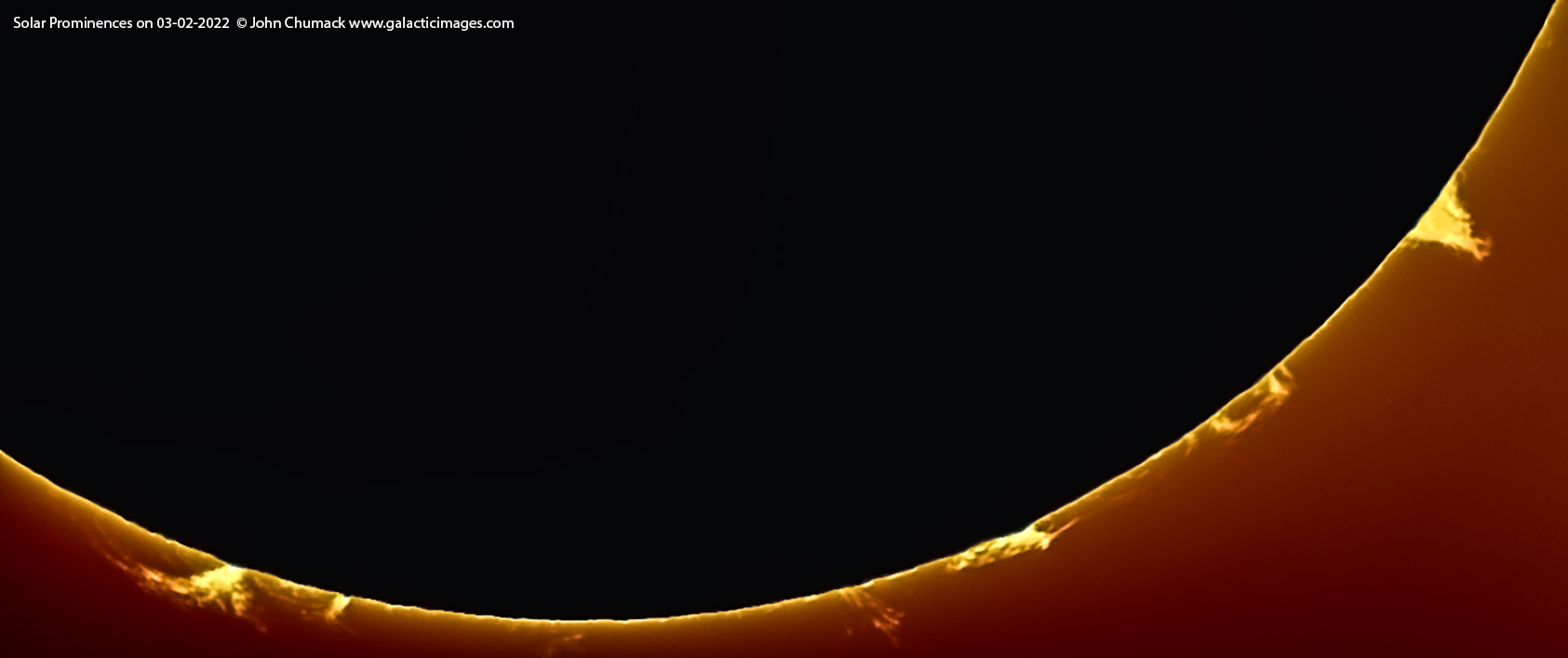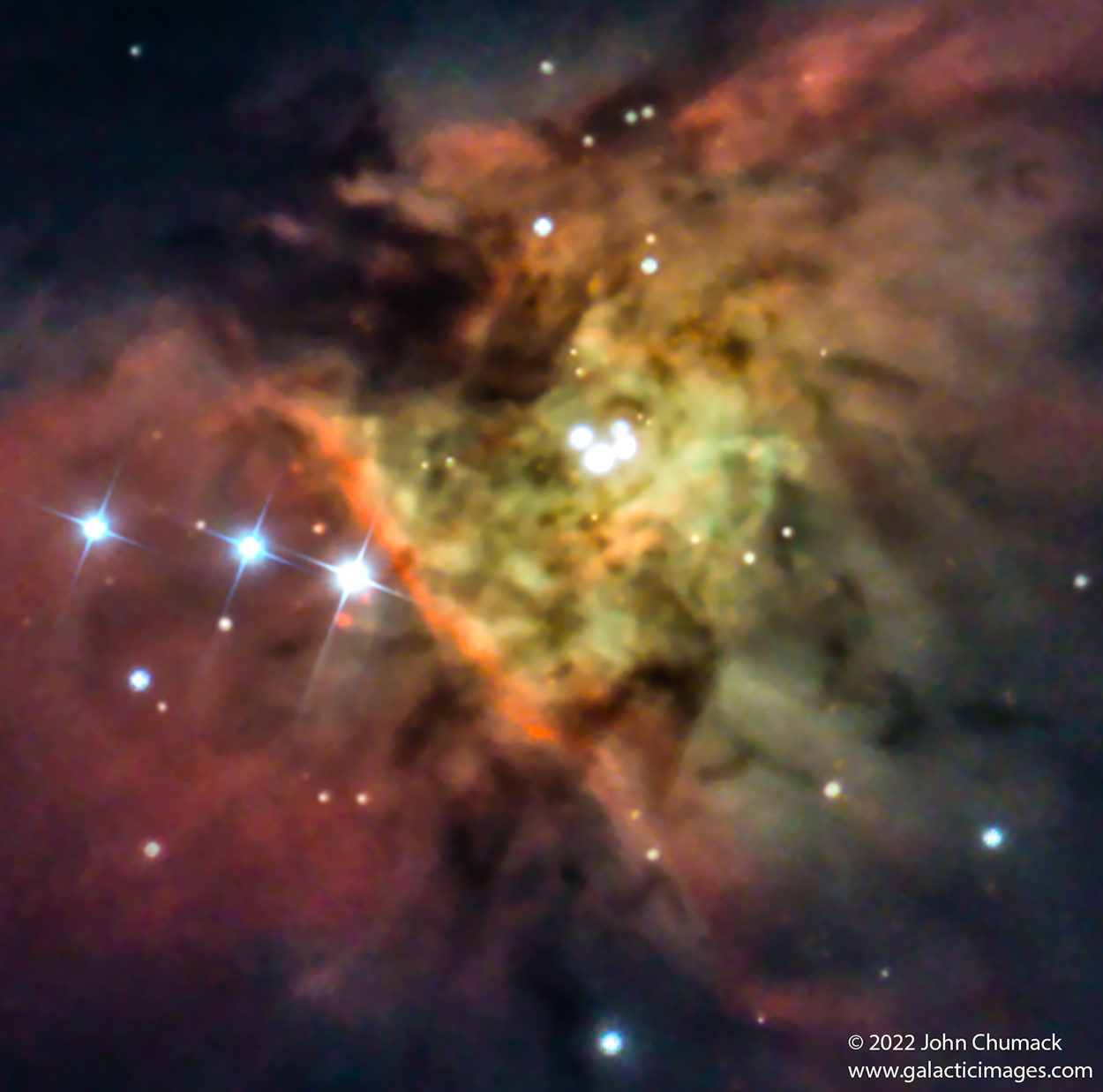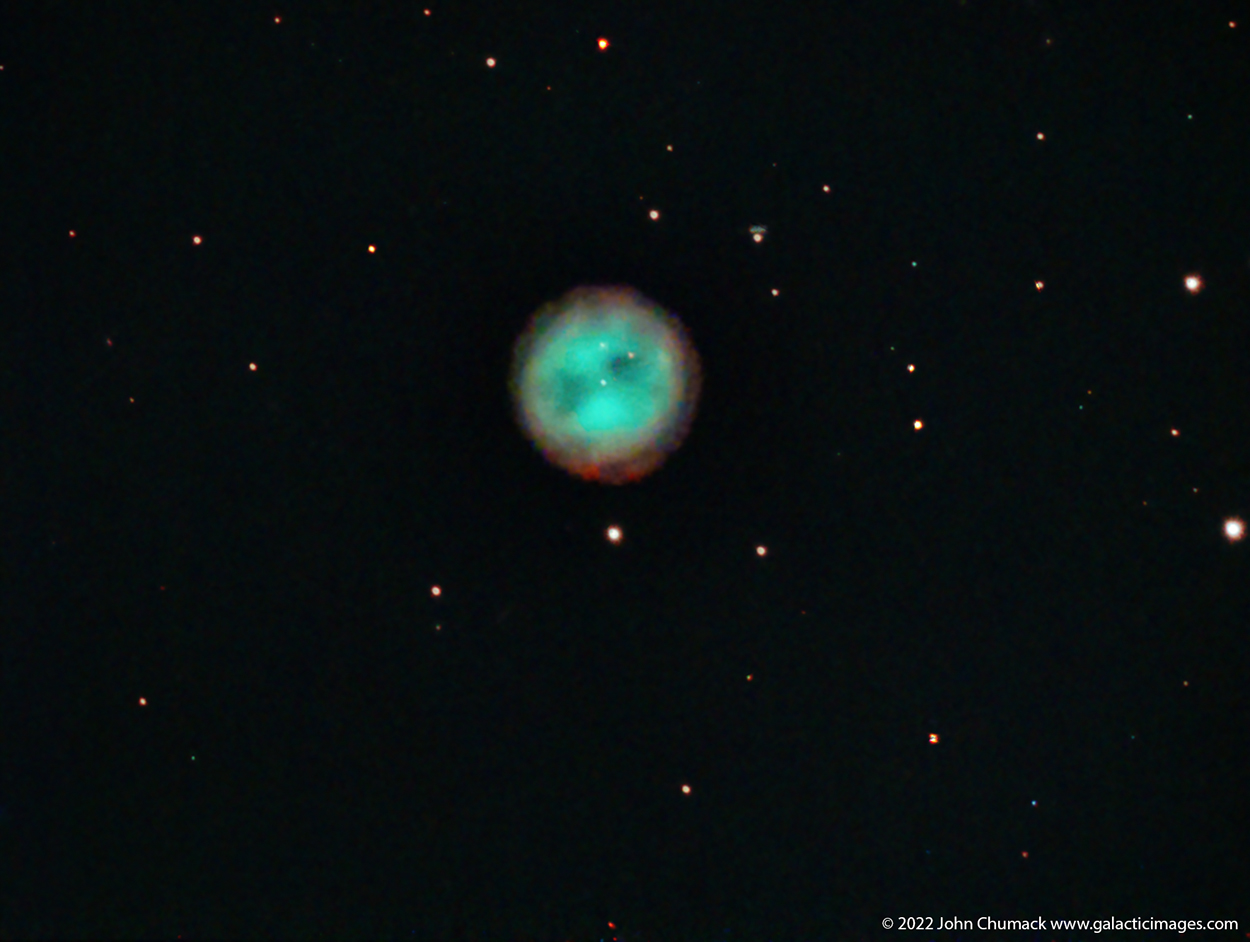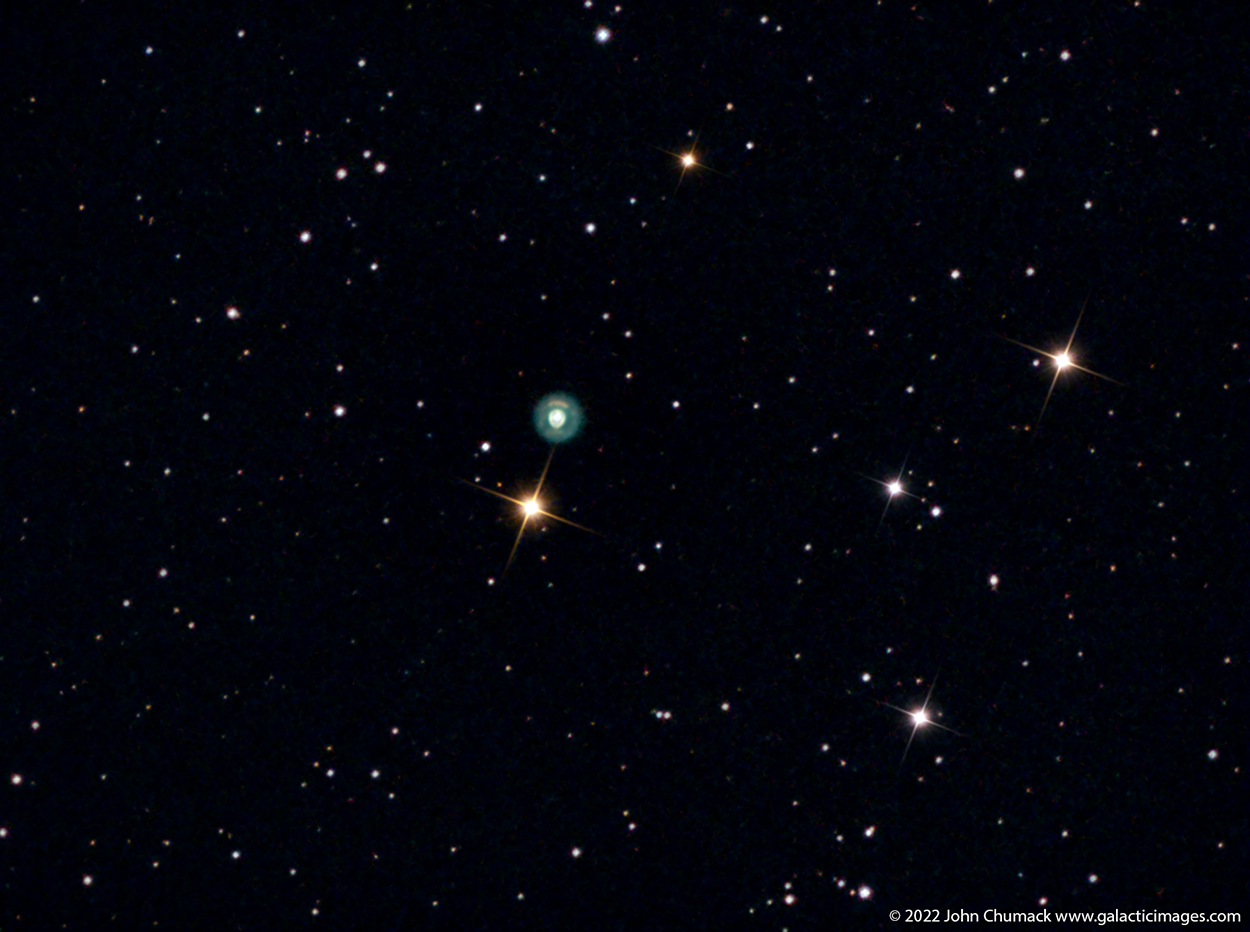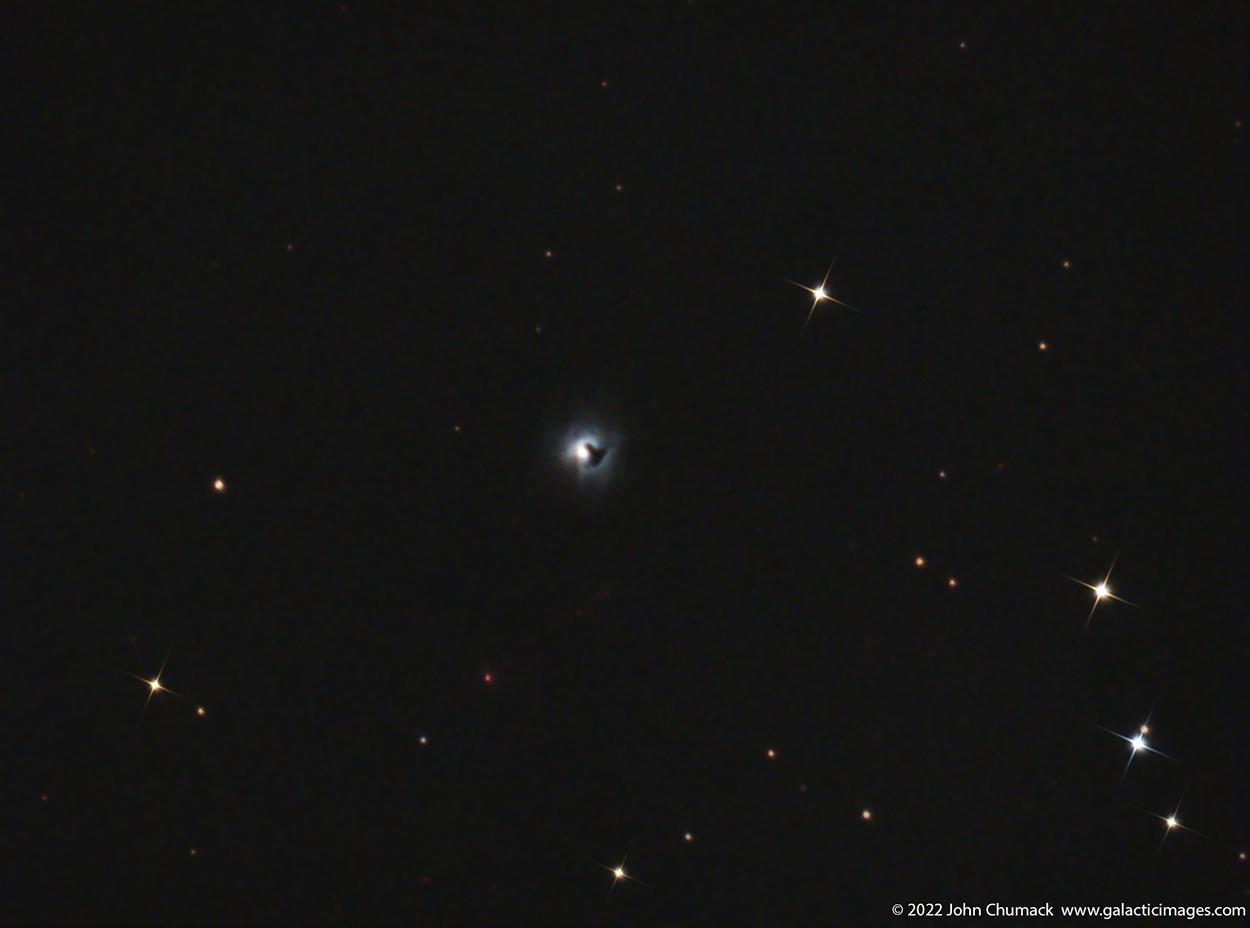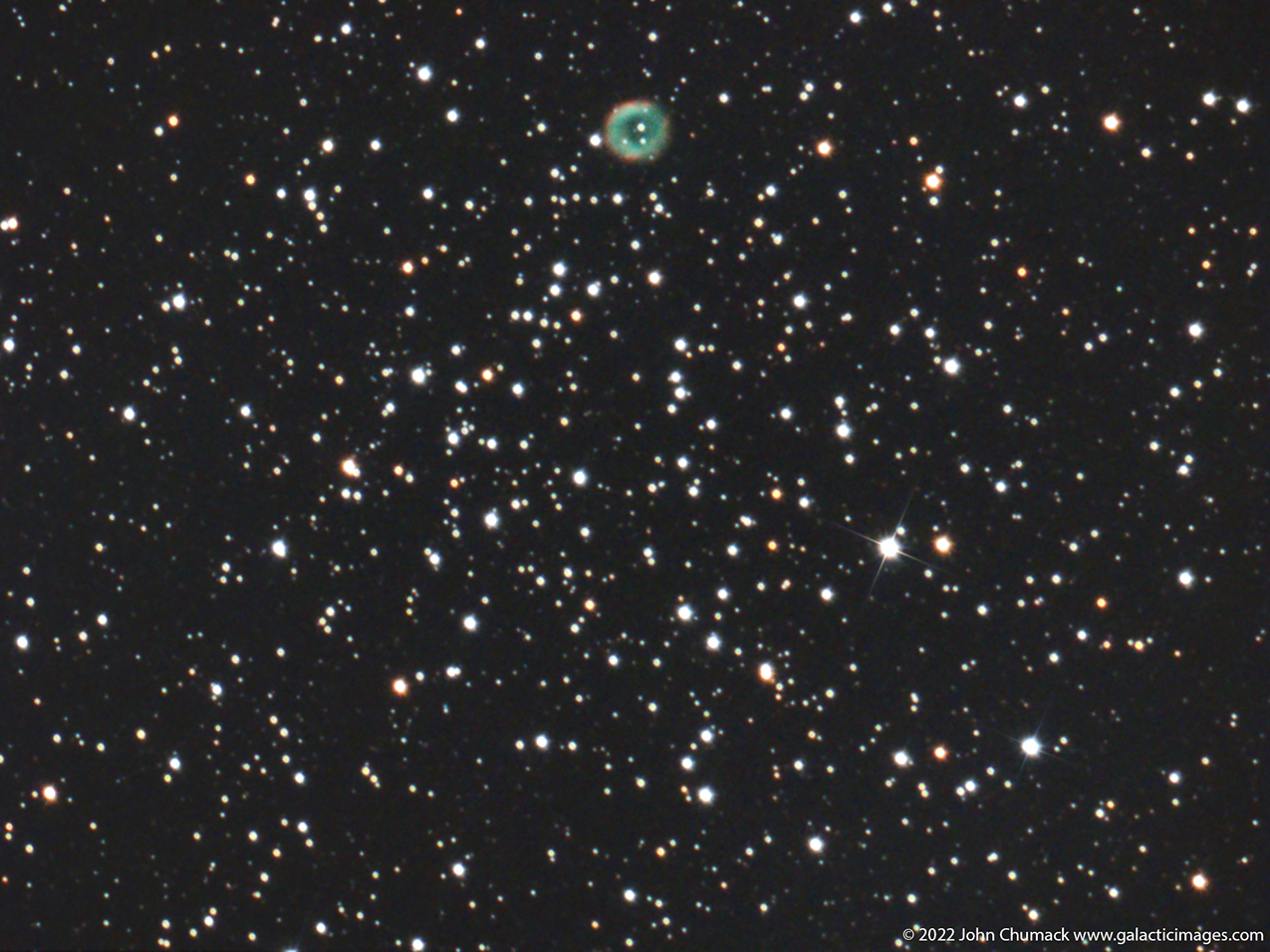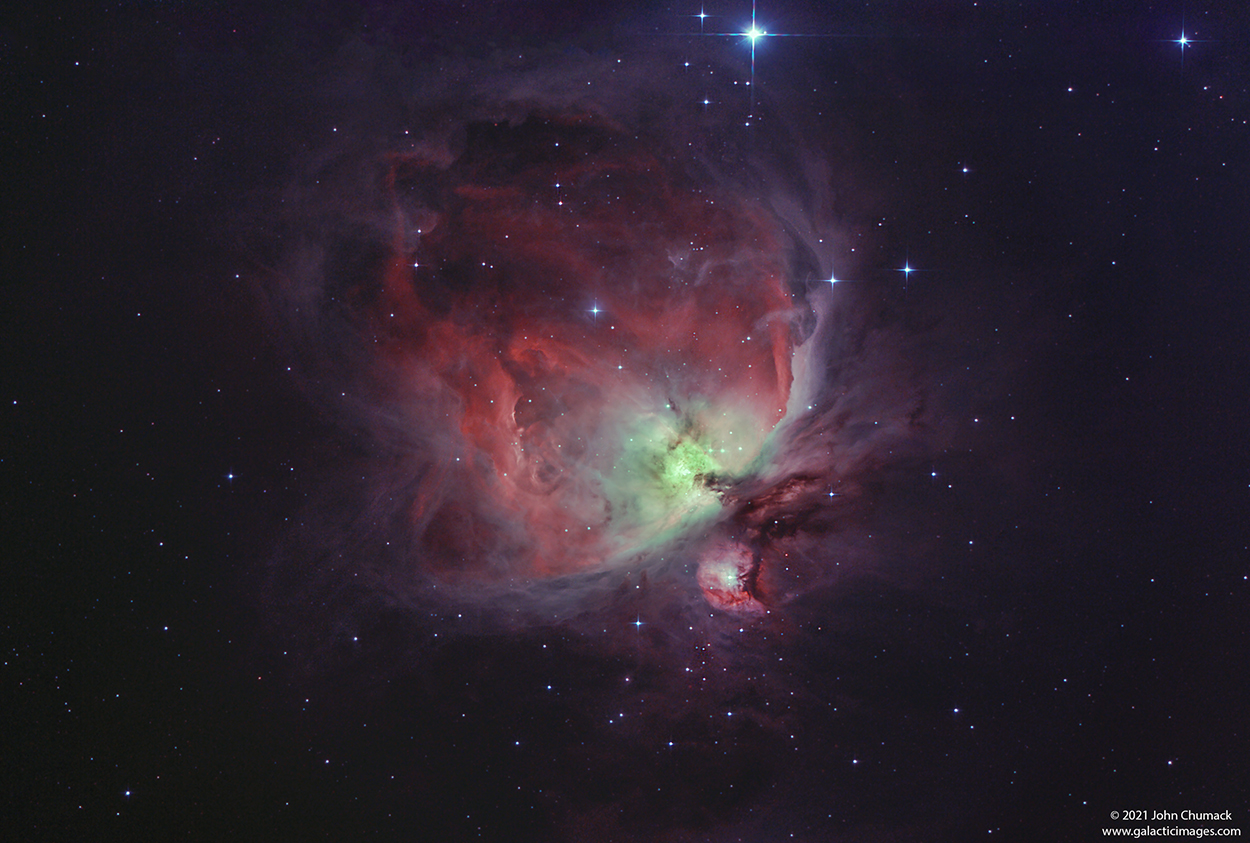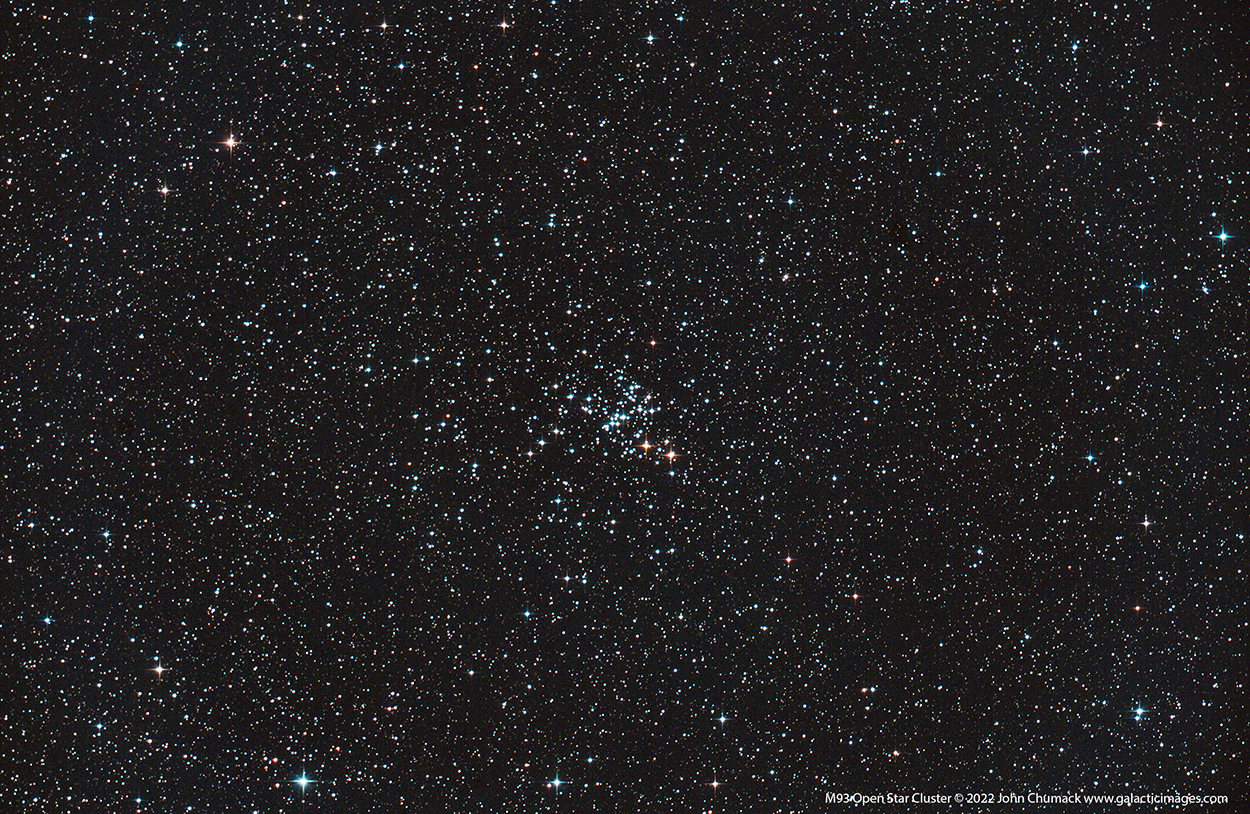Solar Prominence activity 03-02-2022
Thanks to my buddy Tom Bisque for giving me the heads up as he was watching some nice Prominence activity on the Sun from out in Colorado, so I decided at lunch time to go take a quick look from my backyard observatory in Dayton, So glad I did and I captured some of the activity.
I was really pressed for time on my lunch break yesterday, rushing to get a shot off and just before the clouds rolled in, I was able to capture a couple of shots of the Prominence activity on the Sun’s South Eastern Limb.
Here is one of those shots Solar Prominence’s on 03-02-2022, Solar Proms on the Sun’s Southeastern Limb.
Lunt 60mm/50F HA filter Solar telescope, Bisque MYT Mount, QHY290M Cmos Camera, 4.9ms exposure, Fire-Capture SER File, 495 frames stacked in Registax6.
Captured from my backyard Observatory in Dayton, Ohio.
Best Regards,
John Chumack
www.galacticimages.com
Theta 1 Orionis – The Trapezium’s Bok Globules (ZWO224MC)
Theta 1 Orionis – The Trapezium Open Star Cluster, also known as the clutch of eggs inside the center of M42 the Great Orion Nebula Complex.
Shining at 5.1 magnitude, the Trapezium stars are very easy to see visually through a small telescope or Binoculars on a tripod,
but Photographically this region often gets over exposed while trying to capture the fainter outer regions of the Nebula.
I used “Lucky Imaging” Method 30 x (short 2 second exposures) to capture this to bring out the details in the dust/Bok Globules in the Core of the Trapezium region.
Theta 1 Orionis C1, the brightest star in the core is responsible for generating most of the ultraviolet light that is slowly ionizing and perhaps photo-evaporating the
Orion Nebula. This UV light is also the primary cause of the glow that illuminates the Orion Nebula.
The Trapezium star C1 emits a powerful stellar wind that is a hundred thousand times stronger than the Sun’s, and the outpouring gas moves at 1,000 km\s.
The Dark brown dusty shapes of are known as Bok Globules, Bok globules are isolated and relatively small dark nebulae, containing dense cosmic dust and gas
from which star formation may take place.
Bok globules are found within H II regions, and typically have a mass of about 2 to 50 solar masses contained within a region about a light year or so across.
M42 & M43 The Great Orion Nebula is a massive Star formation region there are estimates of over 50,000 stars being formed in the Nebula.
Theta 1 Orionis is located at 1500 light years away in the Constellation Orion, inside the Orion Nebula.
Celestron 6″ F5 Newtonian Scope, Bisque MYT Mount, ZWO224MC Uncooled Cmos Camera, 30 x 2 second exposures Stacked(60 second total integration time), ASI Air WiFi- to IPAD
Using DSS, Nebulosity, Pixinsight, Adobe Raw CS 2022. Captured from my backyard observatory in Dayton, Ohio on 02-20-2022.
Best Regards,
John Chumack
wwww.galacticimages.com
M97 The Owl Planetary Nebula, or NGC 3587 – ZWO224MC
M97 The Owl Planetary Nebula, or NGC 3587
Called the Owl nebula, due its resemblance to a Barn Owl’s Face.
The Owl Nebula is approximately 2,030 light years away in the northern constellation Ursa Major.
M97’s size is 3.5 arc minutes in diameter, and it shines at apparent magnitude of 9.9.
The nebula formed when a dying Sun-like star ran out of hydrogen fuel, collapsed from a red giant to a white dwarf,
and ejected its outer envelope.
The nebula elements like hydrogen, helium, nitrogen, oxygen and sulfur are expanding at a velocity in the range from 27 to 39 km/s.
I captured this image with a Celestron 6 inch F5 Newt. Scope, Bisque MYT Mount, ZWO 224MC Uncooled Cmos Camera, ASI Air App acquisition, via Wifi to IPAD,
No Auto-guiding, no filters, just “Lucky Imaging Method”(short exposures stacked) 102 x 30 second exposures, 51 minute total integration time
from my Backyard Observatory in Dayton, Ohio on 02-19-2022.
Best Regards,
John Chumack
www.galacticimages.com
NGC 2392 The Eskimo Nebula – ZWO224MC
Another image from my Bright Tiny Object (BTO) week…
NGC 2392 The Eskimo Nebula, also known as the Clown-faced Nebula, Lion Nebula, or Caldwell 39, is a bipolar double-shell planetary nebula (PN).
A dying star that has blown off it’s outer atmosphere.
The blue green Parka looking outer envelope is how it got its nicknames.
The Planetary nebula is tiny in most telescopes but is very bright, shining at magnitude 10.
It is located 6,520 light years away in the constellation Gemini.
The Eskimo’s face is hot in X-rays, a result of interactions between the star’s fast winds colliding with the shell of the nebula.
Here, temperatures reach some 2 million degrees Celsius, much hotter than the surrounding ejected material that glows at around 14000°C
I captured this image with a Celestron 6 inch F5 Newt. Scope, Bisque MYT Mount, ZWO 224MC Uncooled Cmos Camera, ASI Air App acquisition, via Wifi to IPAD,
No Auto-guiding, no filters, just “Lucky Imaging Method”(short exposures stacked) 60 x 10 second exposures, 10 minute total integration time
from my Backyard Observatory in Dayton, Ohio on 02-20-2022.
Best Regards,
John Chumack
www.galacticimages.com
NGC 2261 – known as Hubble’s Variable Nebula or Caldwell 46
Another image as Part of my bright tiny objects week,
No, its not a new comet!
NGC 2261 (also known as Hubble’s Variable Nebula or Caldwell 46) is a variable nebula located in the Unicorn constellation Monoceros.
The nebula is illuminated by the star R Monocerotis (R Mon), which is not directly visible itself.
The star R Monocerotis has lit up a nearby cloud of gas and dust, but the shape and brightness slowly
changes visibly even in small telescopes over weeks and months, and the nebula looks like a small comet.
Shining at 9.0th magnitude, the Hubble’s Variable Nebula is located 2,500 light years away from Earth.
Part of my bright tiny objects week,
I captured this image with a Celestron 6 inch F5 Newt. Scope, Bisque MYT Mount, ZWO 224MC Uncooled Cmos Camera, ASI Air App acquisition, via Wifi to IPAD,
No Auto-guiding, no filters, just “Lucky Imaging Method”(short exposures stacked) 70 x 30 second exposures, 35 minute total integration time
from my Backyard Observatory in Dayton, Ohio on 02-20-2022.
Something Dark Lurks Here?….NGC1999
More from my bright tiny objects week….using ASI Air Auto-run
Something Dark Lurks Here? …Not really, its just like looking through a keyhole.
NGC 1999 is a dust-filled bright nebula with a vast hole of empty space represented by a black patch of sky, as can be seen in my photograph.
It is a reflection nebula(blue/white), and shines from the light of the variable star V380 Orionis.
It is located 1,500 light-years away from Earth in the constellation Orion. It was previously believed that the black patch was a dense cloud
of dust and gas which blocked light that would normally pass through, called a dark nebula. Further analysis with IR telescopes show it to be a
simple Hole in the reflection nebula showing the background of space, not a dark nebula.
The Immediate area surrounding the reflection nebula has large, fainter Dense dust clouds that can be seen better the H-Alpha
wavelength. This is just a quick 15 minute visible light shot from my back yard in Dayton, Ohio.
Celestron 6 inch F5 Newt. scope, Bisque MYT Mount, ZWO 224MC un-cooled Cmos Camera,
ASI Air, Ipad APP for capture, no filters, unguided, 30 x 30sec. exposures stacked, 15 minute total exp integration.
Dayton, Ohio on 02-19-2022.
M46 Open Cluster with close-up of NGC 2438 Planetary Nebula
I’ve gone Inside M46 Open Star Cluster to take a look at NGC 2438 Planetary Nebula (Cheerio in the Sky)
Messier 46 or M46, also known as NGC 2437, is an open cluster of stars shining at magnitude 6, it is about 5,545 Light years away in the slightly southern
constellation of Puppis.
NGC 2438 planetary nebula is a dying star blowing off its outer atmosphere and is actually in front of the cluster, shining at magnitude 10, and is 1,370 light years away.
I was testing out my old ZWO224MC uncooled planetary camera with ASI Air for automated capture of Bright Planetary Nebulae (dying stars) and other small but bright targets,
with a 6 inch F5 Newt. scope. 60 x 30 second exposures stacked. 30 minute total integration.
I love watching the automated capture of these objects as they pop up on my IPAD via Wifi from the ASI AIR, every few seconds to minutes without having to brave the cold,
I paid my frigid dues over the 30+ years, especially back in the days of film and early CCD.
The tech and apps/software still amazes me today. and all done from my backyard observatory in the city.
This image is visible light, no LPR filters, done with “Lucky Imaging Method” (many short exposures)…via ASI Air and App on my IPAD.
22 x 17 arc minute FOV, 1.02 arc sec/pixel, I’m always trying the push the limits with minimal setups.
Best Regards,
John Chumack
www.galacticimages.com
M42 and M43 The Great Orion Nebula “Happy Valentine’s Day”
M42 & M43 The Great Orion Nebula,
Every year I have to at least take one visible light shot of this Sweet and Beautiful Cosmic Flower in the night sky.
The Orion Nebula is a diffuse nebula situated in the Milky Way, being south of Orion’s Belt in the constellation of Orion.
It is one of the brightest nebulae and is visible to the naked eye in the night sky.
M42 is the largest Brightest section of the Nebula Complex, The Trapezium Star Cluster is the brightest section near the center, and
the little Comma shaped section near bottom of the nebula is known as M43.
The Nebulae complex is one of the best to view with a telescope, easily visible in Binoculars, even from the city.
It is 1,344 and is the closest region of massive star formation to Earth.
The nebula spans about 24 light years across (139.2 trillion miles)
12″ TPO F 4 Newt. Scope, Bisque ME Mount,Hap Modified Canon 6D DSLR, ISO 800, (visible light only)
20 x 1 minute subs , 10 x 2 minute subs, 12 x 30sec subs, each time set stacked separately in DSS, Nebulosity, Pixinsight,
then carefully Layered using revealing Masks into Adobe CS 2022.
Best Regards,
John Chumack
www.galacticimages.com
M93 Open Star Cluster in Puppis (12″ TPO)
M93 or NGC 2447 The Open Star Cluster is nestled in one of the richest star fields along the Winter Milky Way, located in the Constellation Puppis. M93 is the streamlined looking cluster of stars near the center of my recent image. Although it sits very low in the South for us Northern hemisphere observers, it is bright and an easy target with binoculars or a small telescope. The cluster has an apparent diameter of 22 arc minutes, roughly two thirds the size of the full Moon. It lies at a distance of 3,600 light years from Earth.
I captured this image with my 12” F4 TPO Newtonian telescope, Bisque ME mount, and HAP Modified Canon 6D DSLR, ISO 800, 10 x 1 minute subs, 10 minute integration time.
The SkyX , Canon Utility, DSS, and Pixinsight, Adobe Raw in Adobe CS 2022. Captured from my observatories in Yellow Springs, Ohio on 01-08-2022.
Have a Great Super Bowl / Valentine’s Day weekend everyone!
Best Regards,
John Chumack
www.galacticimages.com
Large Prominence on the Sun 02-05-2022
A Large Solar Prominence is still on the Sun, NASA’s Space weather page just linked to one of my shots of the Prominence taken last Saturday 02-05-2022…but the Prominence is still putting on a show!
Captured with my Lunt 60mm/50F HA scope, QHY290 Cmos Camera, 31.8 ms exp, Fire-Capture SER file, 640 Frames stacked in Registax6.
Best Regards,
John Chumack
www.galacticimages.com


